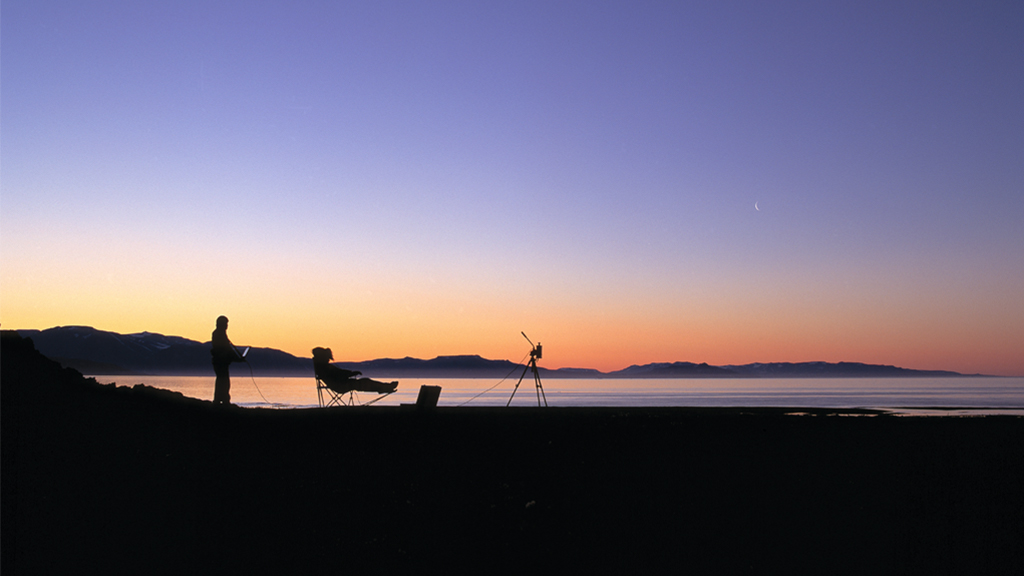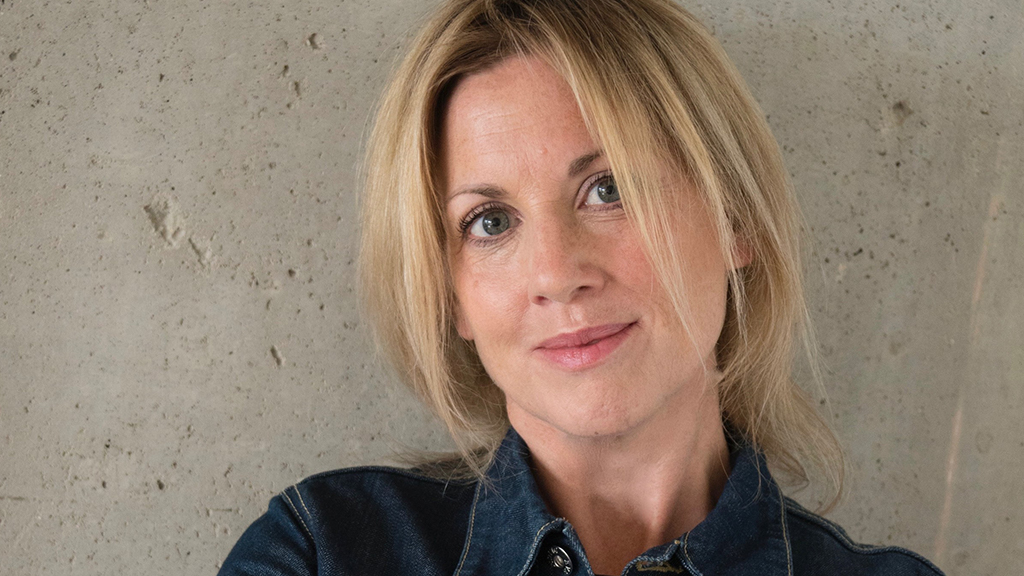Meet Dr Jo Joelson, Programme Lead for MA Arts and Place
We’re very pleased to introduce Dr Jo Joelson, the Programme Lead for our radical new MA Arts and Place. Jo is a practicing artist, curator and writer, with a particular focus in working with light, and she brings with her a background in academic research and collaborative working. We asked Jo some key questions to find out a bit more about her and her thinking as she prepares to start the first residency-based teaching here at Dartington in April.

Image credit: London Fieldworks, Polaria, North east Greenland. Photo: Anthony Oliver
Your career so far and past achievements / training?
I have a masters in curation (art, design, new media) and in 2020 was awarded my PhD from the University of Sunderland. My practice has evolved over two decades as co-director of the collaborative art partnership London Fieldworks. International fellowships, commissions and residencies have provided opportunities for interdisciplinary research and fieldwork in remote locations, at research sites and institutions including – the Space Sciences Laboratory, (University of California, Berkley); Dept. of Physics and Astronomy, (University of Leicester, UK and EISCAT Svalbard, Norway); Skaftfell Center for Visual Arts, The Living Art Museum (Nýlistasafnið) and Library of Water (Vatnasafn) (Iceland); Northeast Greenland National Park; Reserva Ecológica Guapiaçu, Atlantic Forest, Brazil; and Headlands Center for the Arts, Marin County, California. Fieldwork has incorporated dialogue across disciplines working with architects, designers, engineers, scientists, social scientists, anthropologists and local communities.
The research, fieldwork, artmaking and writing all respond to our notion of ecology as a complex inter-working of social, natural, and technological worlds. The approach to projects is collaborative, often socially engaged, with works made in the landscape, for the gallery, screen and radio.
What most inspires you about the subject Arts and Place?
Attending to place and to habitat which contain new avenues for exploration is fundamental to my practice as an artist, film maker and scholar. This expands thinking as well as modes of working, networking, transcultural learning and knowledge production. Over the past decade this has translated into structures of engagement that investigate the meeting points of culture and nature. By responding to and reflecting local conditions, from the history, the cultural and geographic or the socio-political environment, the artist or curator has the possibility to challenge global cultural homogenization in the twenty-first century.
In recent years I have returned to the subject and study of light and its central role in human experience. There are fundamental things driven on primal levels by light and our evolved biological relationship to light. I’m particularly engaged with light’s role in theorizing landscape and place. The mutual elements of ‘local knowledge’ and western scientific systems feature within many of the projects I work on and they are consistently in dialogue – from the dominant eye and instrumentation of science, to the contribution of local narratives which both advance understanding, skills and philosophies towards sustainable thinking. That’s some way of entering into my relationship to arts and place.
Tell us about your current research interests and art practice?
The core subject of my PhD research was the medium and subject of light in art and performance since 1960, tracing developments in aesthetics, technologies and related social and cultural practices. These were explored intensively during conversations with over 30 leading artists and designers, published in: Library of Light: encounters with artists and designers (Lund Humphries, 2019). Through a series of essays, I examine the historical and contemporary shifts in perspective, reflecting on the expansion of light from an optical dimension into a medium of digital information, opening the medium to new areas of social and political critique. My enduring interest in cultural responses to light and the vocabulary of light is an area I continue to research and write about.
Within the global picture, I am concerned with the ethics and aesthetics of light – the ways in which it can be used to engage and challenge social codes, as well as political and economic realities. So this is my current focus. I am also re-visiting past thinking around voidance, negation, erasure – and the non-idea. I am quietly engaged with new things!
What brings you to Dartington?
The commitment Dartington has to interdisciplinary education and dialogue centred on art in relation to the environment presents an opportunity to contribute to and shape an innovative field of study. The individual and independent voices that make up the Dartington community reflect the earlier roots and influence of inter-disciplinary learning from the Bauhaus and Black Mountain College. The focus of ‘Arts and Place’ is fertile ground set against the urgency of global climate change and the strains on art as a means of communicating the risks of ecological crisis. Understanding these tensions provides an exciting challenge for a growing Arts School – one I am proud to be a part of.

Dr Jo Joelson, Programme Lead, MA Arts and Place
Photo by Louise Constad
